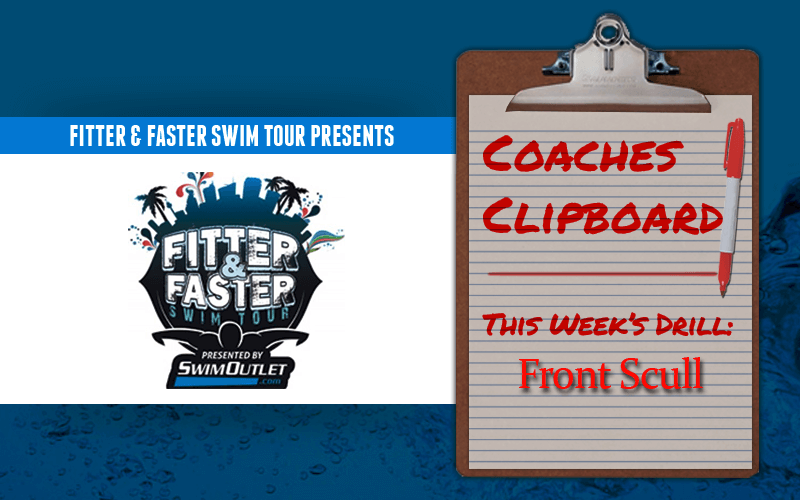Fitter And Faster Swim Drill Of The Week: Front Scull

Welcome to the “Swim Drill of the Week” sponsored by The Fitter and Faster Swim Tour presented by Swimoutlet.com. Swimming World will be bringing you a drill, concept, or tip that you can implement with your team on a regular basis. While certain weeks may be more appropriate for specific levels of swimming (club, high school, college, or masters), Drill Of The Week excerpts are meant to be flexible for your needs and inclusive for all levels of swimming.
This week’s drill is Front Scull, which is a useful drill for all strokes. Going along with Windshield Wiper sculling, this drill is a great way to develop a solid feel for the water at the front end of all of your strokes. The drill itself is fairly simple: pushing off the wall with both hands in front, swimmers will go down the pool while moving their hands back and forth in front of them. Their hands should go no wider than shoulder width apart, and they should have just a slight flutter kick to help maintain their body position.
The key to doing this drill correctly is to maintain high elbows and constant contact on the water with your hands. To do this, swimmer’s should have a slight bend in their elbows with the fingertips angled down. At no point should there be “slipping” in the water from side to side. Encourage your athletes to go slow and take their time with this drill. It isn’t necessarily who can move their arms the fastest, but rather who can get the most out of each scull. Also watch your swimmers’ head position and body position. Their heads should be in line with the rest of their body throughout this drill. Using a snorkel can help them focus on maintaining good lines and getting the most out of their arm movements.
This high elbow, fingertips down position is the starting point of nearly every stroke’s catch phase, so it is a great drill to use with all of your swimmers. The goal is to get used to finding contact with the water at this point in the stroke. If you are able to maintain contact here and get a good grip on the water, that will make the rest of your pull that much more efficient. More efficient pulling makes for more efficient swimming, which ultimately makes for faster swimmers. Happy swimming!
All swimming and dryland training and instruction should be performed under the supervision of a qualified coach or instructor, and in circumstances that ensure the safety of participants.



